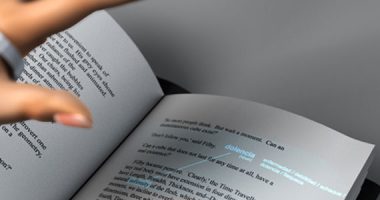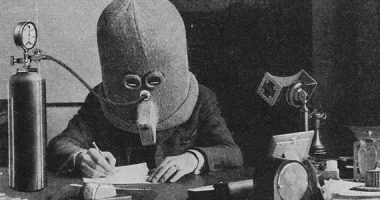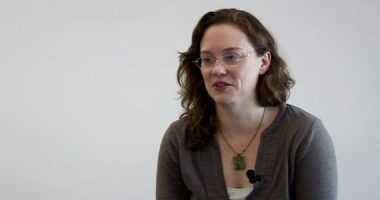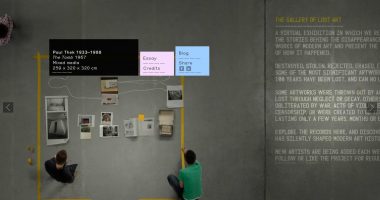
By the year 2016 there will be over 10,000 million mobiles connected to the Internet and last year in Spain there were already more smartphone lines than ADSL lines, as noted by Albert Sierra in his presentation on heritage apps during the DIGIMUS conference. The figures for usage and implementation of mobile technology evidence a vertiginous change in the form of transmitting and sharing cultural contents, both by institutions and users. Someone already commented at the last edition of MuseumNext in Edinburgh that we have reached the point where a museum visitor carries more technology on their person than the institution may have in its halls. Having reached this point, as cultural organisations we have to be prepared to continue informing and transmitting knowledge through a technology that is implemented swiftly among the population. Many museums are already presenting their websites, collections or exhibitions via mobile applications, but is that sufficient? Should those museums that have no mobile app have one? Is it an emergency? A need? A fashion?
At MuseumNext Barcelona, Allegra Burnette, creative director of digital media at the Museum of Modern Art (MoMA), presented different MoMA mobile projects to conclude that work with mobile is more evolutionary, dynamic and involves shared learning. An institution’s mobile strategy is a continual process of experimentation that has to be in tune with the organisation’s objectives.
More notes that we learned from the presentation by Allegra Burnette and which may be useful to you if you are thinking about launching any mobile projects:
- It is important to think up mobile applications that generate experiences in the user
- It is interesting to go further than the traditional guided visit to the museum and offer content on demand, which goes beyond the information offered by the collection/exhibition.
- It is necessary to experiment with contents designed for/addressing different audiences.
- The mobile allows diverse business and sustainability models to be explored.
At the Connected Environment conference, Jason daPonte, founder of Swarm, considered a series of cases regarding changes that mobile telephones are producing in our way of relating to the world, and how the so-called “Internet of things” is increasingly visible by the day. Among the projects that he mentioned, three are prominent:
- Tales of things , which creates stories around objects captured by users with their mobile devices and, at the same time, allows other users to discover these stories because the objects are labelled with QR codes.
- Sundaydrive , an app that allows a tourist route to be followed and informs you if you have missed something out when the GPS detects that you have gone past it.
- TubeTap , an app that allows you to control travel times on the London Underground in such a way that if your journey is delayed by over 15 minutes, the application asks Transport for London to return your fare.
Another of the keynote speeches at MuseumNext Barcelona related with mobile devices was that offered by Hein Wils of the Stedelijk Museum in Amsterdam and Ferry Piekart (independent consultant) who offered an entertaining demonstration of augmented reality, making dinosaurs leap between the seats of the CCCB Theatre. ARTours, the company behind projects like those presented by Wils and Piekart, develops augmented reality applications that use the city as a canvas. They show how the city was, how it will be and how it might have been. They play with the people attending the Lowlands festival, creating animals that appear from their t-shirts as if by magic. Or they allow them to discover works of art with the touring exhibition Artoteque.
Other experiences related with the mobile world that were presented during #MuseumNext and that we find interesting were:
- MuPon: Mobile discounts to foster repeat visitors & an art-going lifestyle – Paul Baron and Tomomi Sasaka (DAGAGO NPO) are the creators of the Mupon mobile app which offers exclusive discounts for accessing museum and artistic events in Tokyo.
- A crowdsourced, networked, shared, mobile thing – Merete Sanderhoff, researcher at the National Gallery of Denmark, presented the collaborative project produced between nine Danish museums to create a mobile experience based on sharing material in the public domain.
- Touch and Go(gh) – Jolein van Kregten, from the Van Gogh Museum, and Ebelien Pondaag from Fabrique, presented Touch and Go(gh), an interactive application that allows users to play with the work of Van Gogh, discover real scenes that he painted and learn about his pictorial technique. The application will shortly be available on the iPads that the Museum makes available for its visitors.
On the use of QR codes:
- Smart Objects for direct and transient public engagement in museum spaces and social networks. Claire Ross from University College London and Chris Speed from the University of Edinburgh explained diverse examples of the creative use of QR codes, which are used not only to read information, but also to receive answers from users in order to establish a conversation with them through museum objects. They mentioned projects such as The tales of things (already mentioned by Jason daPonte) Thingema and QRator, a system that allows the public, curator and academic researchers to create new types of contents, to favour comprehension of the museum and strengthen the community, as well as establish new museum contents.
- QRpedia – Alex Hinojo, Wikipedia ambassador, presented two Wikipedia cultural projects using QR codes. One was developed with the Miró Foundation to coincide with the exhibition Joan Miró. The Escape Ladder. A set of 17 QR codes were created that expanded the information on the works exhibited. The final result was 12,381 scans of the QR codes and over 1,200,000 visits to the Wikipedia site. The other project was developed by Wikipedia specialist Lori Phillips at the Children’s Museum of Indianapolis and it also used QR codes to broaden the user’s experience.




Leave a comment